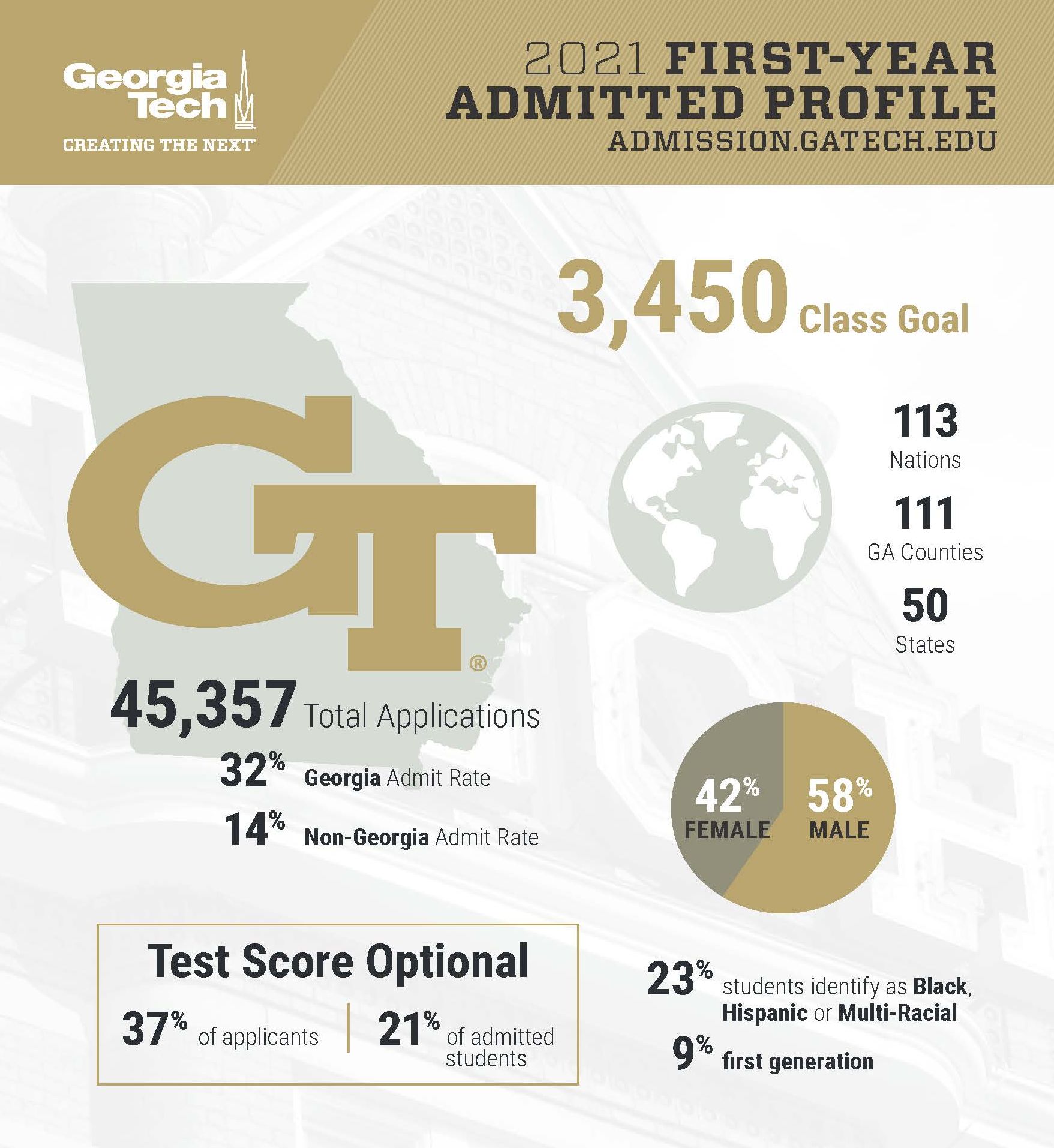
The acceptance letters are out, and the numbers are in. At Georgia Tech, 37% of this year’s applicants elected to go the test-optional route. Of the students admitted to Tech, only 21% were test optional. That means 79% of those accepted for the Class of 2025 decided to report their ACT/SAT scores. At many of the highly selective colleges and universities, applications were up, admit rates were down and test scores were still important to be admitted to the Class of 2025.
The following MarketWatch.com article from March 21, 2021 reports on the current test-optional trends.
SAT and ACT scores may be optional in college applications this year, but many top schools still rely on them
By Howard Gold
Three out of every four students accepted at Penn through early admissions submitted test scores; at Georgetown, that number was 93%.
The big story in college admissions this year is the huge surge in applications over the 2019-2020 academic year. And it’s not just in early admissions, as MarketWatch reported in February.
Highly selective private colleges and top state universities have seen applications skyrocket. Applications to the University of Pennsylvania increased by a third, to the Massachusetts Institute of Technology by two-thirds and to Harvard by 43%, driving the acceptance rate of those already nearly-impossible-to-get-into universities even lower in the single digits.
The nine-campus University of California system received a mind-boggling 250,000 applications, 18% higher than last year. The University of Virginia was up 17%, while applications to the University of Georgia soared by 40%.
Almost everyone agrees on the reason: Colleges and universities went test-optional this year because of the obstacles COVID19 put on high-school students’ ability to take the SAT or the American College Testing (ACT) standardized tests. (The College Board, which administers the SAT, also eliminated SAT Subject Tests for good.)
When those tests were no longer required, kids whose low scores used to prevent them from getting into schools like Yale or Vanderbilt now gave it a shot, applications boomed, and overwhelmed admissions departments pushed back decision day by a week or two. (Less-prestigious private colleges and some state universities like the 23 California State University campuses actually saw applications decline, however.)
Did it work? For some it surely did, but taking the tests and submitting the scores often was the better choice for kids to get into the top schools. The University of Pennsylvania reported that three out of every four students who were accepted through early admissions submitted test scores. At Georgetown University, that number was 93%.
On the other hand, more than half of those admitted early to Tufts and 71% of those who got early acceptances at Boston University did not submit test scores
Pierre Huguet, CEO and co-founder of H&C Education, a Boston-based educational consulting firm, told me that “admissions officers relied pretty heavily on the SAT or ACT to evaluate the academic profile of a student. They were already looking at the academic results, the extracurricular profile, the letters of recommendation, but now they have to find ways to quantify some of these soft skills, and mostly the extracurricular profiles. So, it takes a lot of time. Now on top of that, they received lots of applications.”
Huguet thinks that’s not sustainable. “We’ve already heard from a couple of Ivies that it is extremely difficult for them to evaluate the academic profile of the students without the test scores,…not just because they want to make sure that they select the most competitive students, but also because they want to make sure that they don’t struggle in college,” he said.
That’s why he stresses the difference between test-optional, in which students choose whether or not to submit their scores, and test-blind, in which schools don’t even consider those scores in admissions decisions.
As of February, 69 colleges and universities were test-blind this year, according to FairTest, the National Center for Fair and Open Testing, an advocacy group that opposes standardized testing. Among them: Catholic University, Loyola University New Orleans and Dickinson, Hampshire and Reed colleges as well as the California Institute of Technology, one of the most selective in the U.S.
They also include two bellwethers—the 11-campus City University of New York and the University of California and California State systems. UC, in fact, will likely stop considering the SAT and ACT through at least 2024 and plans to “create a new test that better aligns with the content the University expects students to have mastered for college readiness” or, failing that, eliminate the testing requirement altogether.
This is the wild card. Will the pandemic pause lead to the big changes educational reformers have urged for years? There’s lots of research that shows SAT scores are highly correlated with family income.
And with a big push to increase diversity, particularly amid the racial reckoning that followed the police killing of George Floyd, the anti-test movement is gaining momentum at all grade levels. In fact, many colleges and universities reported the surge in applications yielded a more diverse applicant pool, although it’s unclear whether that will translate into more diverse freshman classes.
FairTest reports more than 1,370 U.S. colleges and universities will be test-optional next year, too.
Several college counselors I’ve spoken with told me the more selective institutions still expect kids in private schools and competitive urban and suburban high schools to take the tests.
“Between two students with the exact same profiles, if one submits the SAT or ACT scores and the other does not, I believe that the school will always favor the student who submits the scores,” said Huguet.
That’s true for now, but with so much up for grabs, it may not be in the future.
– – –
Howard Gold is a columnist for MarketWatch.
